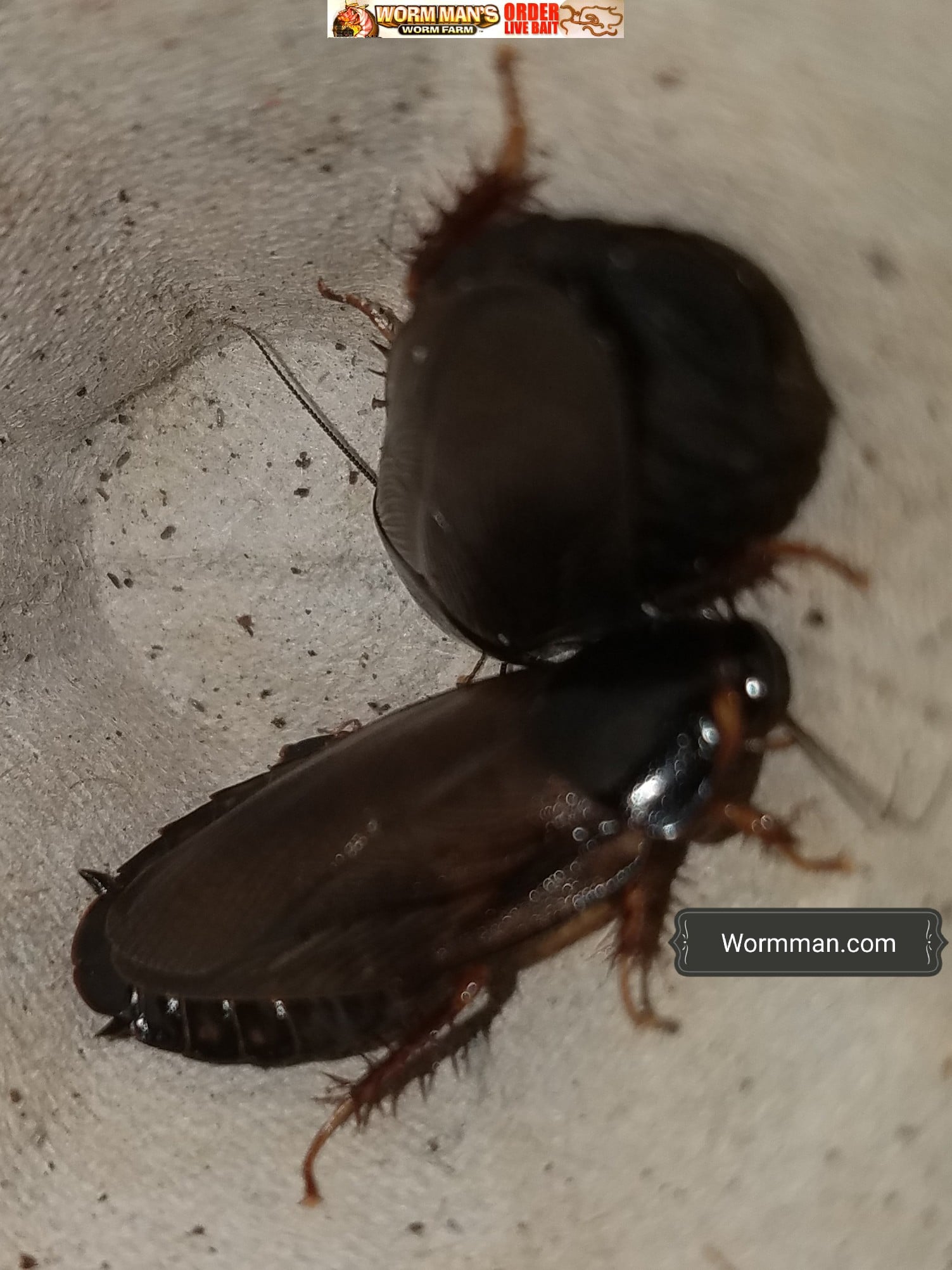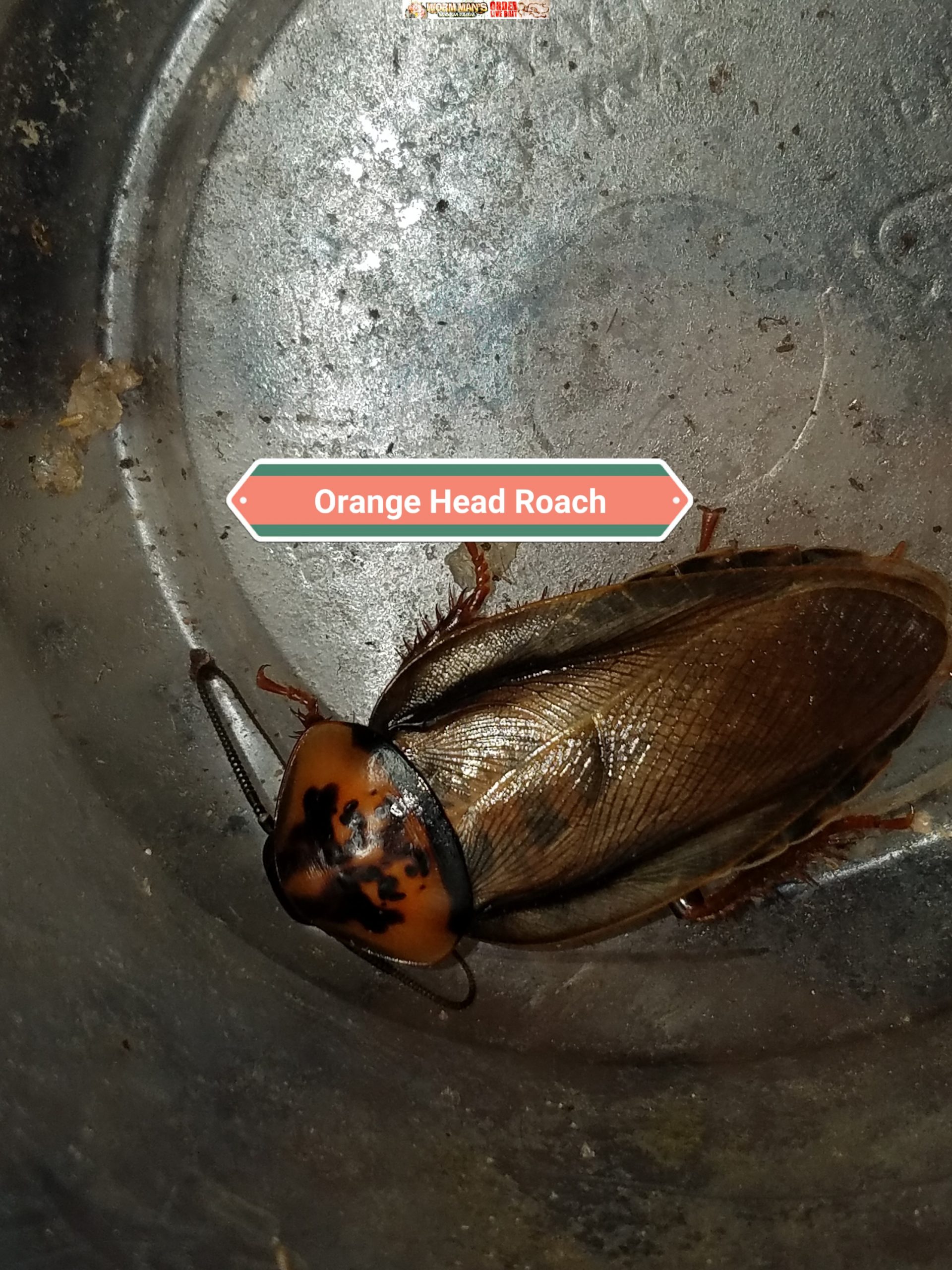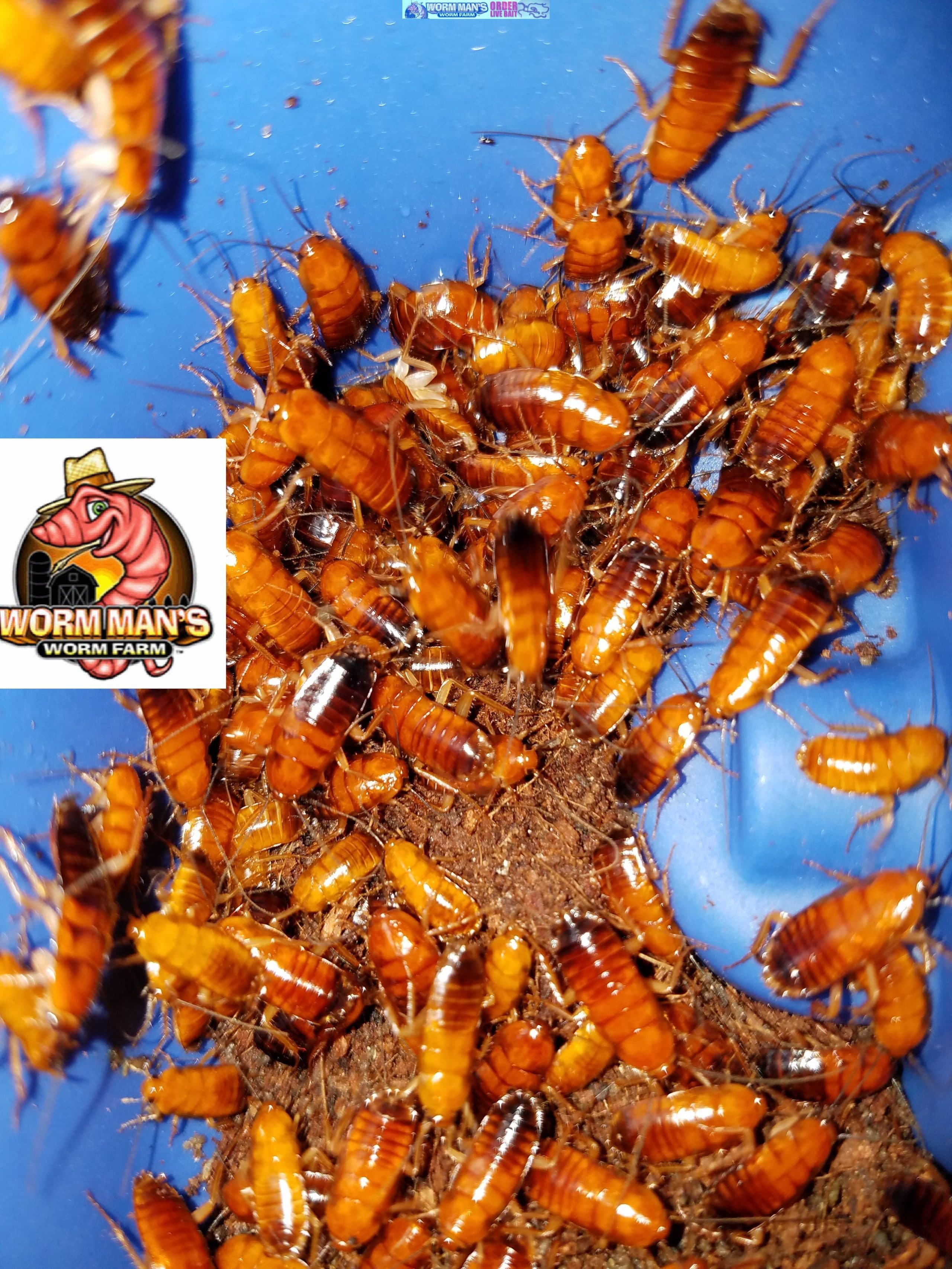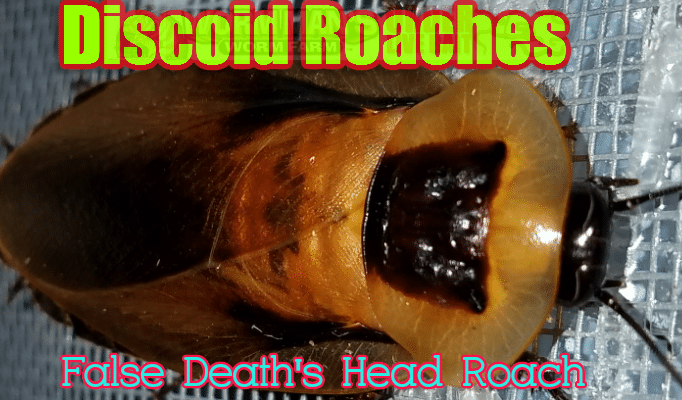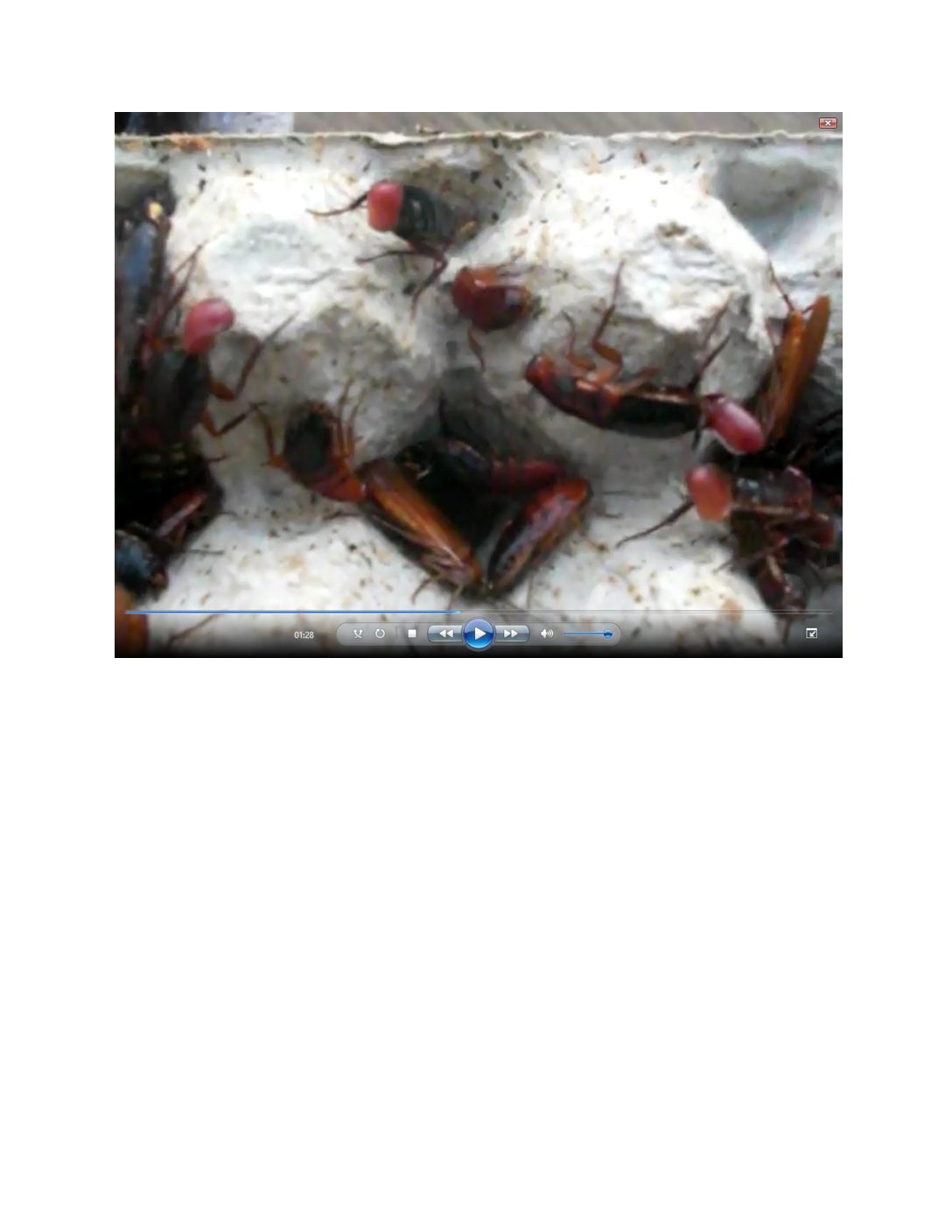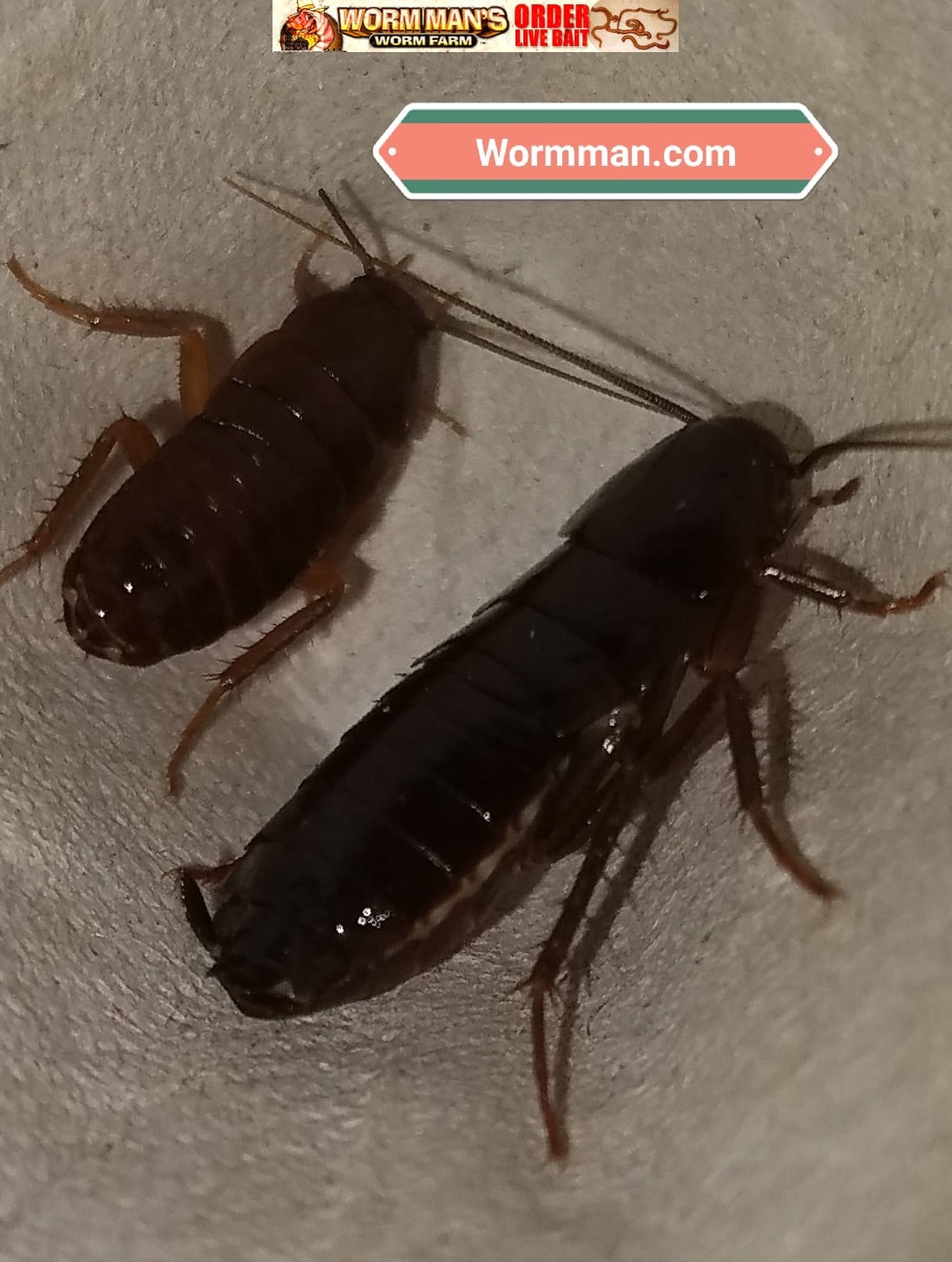
Roach Care Sheet
| Roach Care Sheet:
Oriental Roach Blatta orientalis
|
| Common and Scientific Name |
Oriental Roach Blatta orientalis
|
| Breeding Information and Defining Characteristics |
They They
|
| Feeding Preferences | They feed on dead decaying organic matter. |
| Housing Requirements |
A well ventilated container with lid and Vaseline to prevent escape, eg cartons, food, water and heat |
| Difficulty Rearing |
Medium. We have raised these on very moist substrate and lost every roach. We also have raised them where the temps dipped and they died. If everything is right they will thrive. They look a great deal like Blatta Lateralis except that the adults are larger and darker in color. They are not as easy to raise as Blatta Lateralis. |
| Climbing Habit |
They can climb glass and plastic. They like to climb over branches and egg cartons. |
| Substrate |
No substrate is needed |
| Temperature and Humidity |
They prefer dark, damp and cool areas. The optimum temperature is between 68 and 84F |
| Restrictions |
Florida Legal. |
| Pictures: |   |
| Video |  |

